|
Native Plant of the Month
|
Smooth Blue Aster
Aster laevis
Moisture: Moist or Dry
Exposure: Full or Partial Sun
Bloom: August- October
Color: Blue
Height: 1-3 ft.
Hairless plant with rhizomes that are short and stout and sometimes slender and red. Flower stalk with many deep blue to lavender flowers, each about 1" wide. Leaves often have a bluish or grayish tinge. Plant not fussy about soil type. It's found in fields, open woods, moist and dry prairies, and roadside banks. Flowers are a good source of nectar and pollen for bees and butterflies.
|
|
Invasive Plant of the Month
|
Common Mullein
Verbascum thapsus
Exposure: Partial Shade/ Full Sun
Moisture: Moist/Dry
Height: 3-6 feet
Blooms: June- September
Description: A biennial from Europe, it has long, soft leaves in the first year and forms a long 3-6 foot stalk in the second year. The leaves alternate along the stalk and get smaller the higher up the plant towards the small yellow flowers. The plant has a long, thick taproot and seeds that can stay viable for centuries! Management options include hand pulling the plant out or spraying it with glyphosate early in the spring.
|
| Pollinator of the Month |
Common Buckeye
Junonia coenia
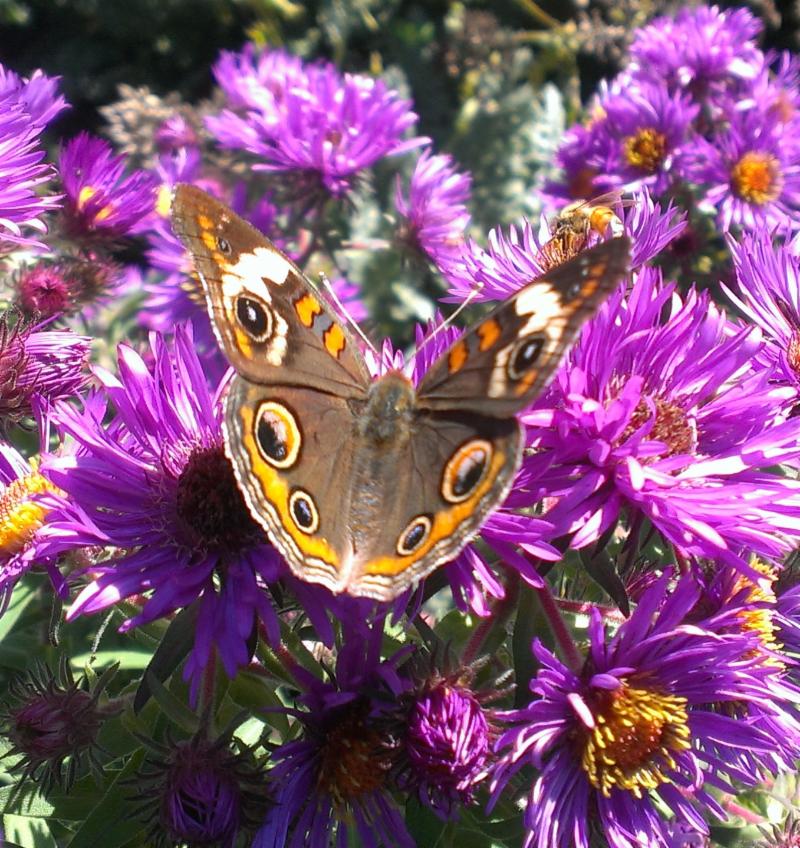
Range: Southern and Eastern US., North to Canada
Habitat: Prairies and open fields
Adult Identification: Tops of wings have two large eyes and two small eyes each. Look for one white stripe and two orange bars on the top wings and a pale orange strip of color along the bottom wings. Undersides of wings are a reddish-brown color in the fall.
Caterpillar Identification: Blackish- gray along the body with orange spots and black spines
Pollination: Adults feed on nectar from Aster Species, Coreopsis species, and other native plants
|
| Garden Club Tours! |
Natural Shore Technologies is now hosting FREE field trips for Garden Clubs with 10 or more members. Come join our Native Plant Specialist Shirley Mah Kooyman for a 1 hour lecture and tour of our retail nursery in Maple Plain! Your club will get an up close experience learning more about Minnesota Natives!
Choose from one of the following lectures:
- Minnesota's Native Plants: A Sampling for Your Garden
- Landscaping with Native Plants
- Top 30 Native Plants for your Garden
|
|
Retail Nursery
|
Our Retail Nursery will reopen next May! Visit our website at Naturalshore.com for Plant lists, prices, and store updates.
|
|
| Climate Change- What does it mean for Minnesota? |
Nowadays you can't turn on the news without hearing about
climate change. It has been in the forefront of scientists'
and politicians' minds for years. But what does climate change really mean for us in our region? What will the future be like for Minnesotans and how can native restorations help?
With the current rate of greenhouse gas emissions being released into the atmosphere, it is predicted that Minnesota's summer temperatures could rise 8-10 degrees Fahrenheit over the next 100 years.
This means our climate and landscape would feel and look more like a state like Missouri. T
rees, shrubs, plants, and even animals that have adapted to our colder climate will decline or migrate out of Minnesota in favor of species that can handle warmer temperatures. For example, many of our northern pine forests Minnesota is known for will migrate up into Canada and be replaced with oak savannas and grasslands. Also, many displaced species will not be able to adapt to the the rapidly changing temperatures because natural areas are so fragmented by agriculture and development, they will be unable to migrate north effectively.
Other effects of climate change in Minnesota might mean more stress on our water resources. Luckily we are a state that contains an abundance of water but we will still see the effects of climate change by lower lake levels, shorter periods of ice on our lakes, and warmer water temperatures that will effect sensitive aquatic species of animals and plants. With milder winters, pests that usually couldn't survive will be able to inhabit Minnesota and degrade even more native habitat. We should also expect to see more extreme weather; more droughts, floods, thunderstorms, and heat waves.
What can we do? Often times it comes down to doing many small things and knowing it won't change overnight. Supporting energy reduction policies, using energy efficient appliances, and carpooling are just a few examples of options available that reduce greenhouse emissions. Growing and maintaining a native garden or shoreline restoration is one way to begin mitigating against climate change. By planting a native garden or restoring your shoreline, can help animals by creating a "corridor", allowing them travel from one natural area to another.
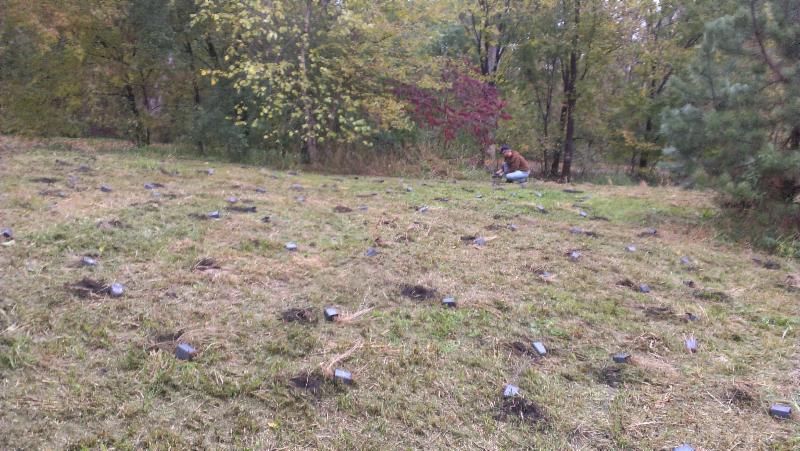
Carbon is the main greenhouse gas that is causing the planet to warm. Again, there are many ways Minnesotans can reduce their carbon emissions. Using energy efficient thermostats, turning off lights, using public transportation, buying local foods, and planting trees in your yard are a few simple ways to start reducing your carbon footprint. Prairie restorations are also able to store carbon like trees.
Depending on the plant species, their root systems can reach over ten feet underground, creating a carbon sink that stores more carbon than a lawn with turf grass. The plants take the carbon out of the atmosphere and store it in their leaves and roots. When they shed their leaves and roots, the carbon is stored in the soil. Can you offset some of your carbon footprint by planting a prairie?
Invasive species that originated from foreign countries that have warm climates will likely flourish even more in our changed climate. Removing those invasives and replacing them with natives will help to maintain our native species in Minnesota for future generations. Every Minnesotan today can do something small to help decrease carbon emissions and protect Minnesota's landscapes for future generations to enjoy.
|
 |
|
Buckthorn Removal
|
|
Now is the perfect time for removing buckthorn from
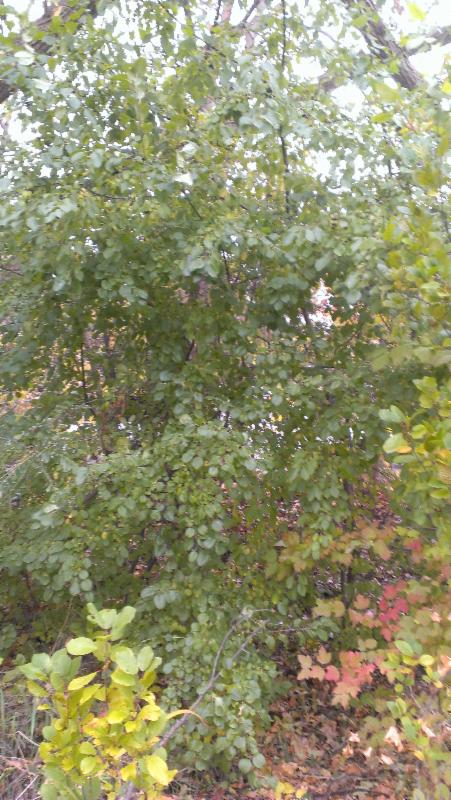
your property! Both Common and Glossy Buckthorn ar
e invasive species from Europe that form dense
monocultures that choke out native plants. It can damage forested areas by discouraging the undergrowth to flourish. The leaves contain hig
h amounts of nitrogen that can change soil characteristics to make them more inhospitable for native plants and shrubs. It is also a host plant for several diseases and insect pests.
 How do you kill Buckthorn?
There are various strategies used to manage Buckthorn depending on site conditions. When removed incorrectly, buckthorn or other invasive seedbanks can be exposed and cause more ecological problems. Some removal strategies also involve treating the leaves or stumps with specific concentrations of herbicide. Disposal of the buckthorn after removal is also important but can be time consuming and labor intensive.
How do you kill Buckthorn?
There are various strategies used to manage Buckthorn depending on site conditions. When removed incorrectly, buckthorn or other invasive seedbanks can be exposed and cause more ecological problems. Some removal strategies also involve treating the leaves or stumps with specific concentrations of herbicide. Disposal of the buckthorn after removal is also important but can be time consuming and labor intensive.
Click
Here to visit our Facebook Page for hints on identification and removal of Buckthorn
At Natural Shore Technologies we have highly experienced staff who can cut the Buckthorn down, treat it with herbicide, and remove it from your property. Call 612-703-7581 or email us at [email protected] for more information.
|
 |
|
Company News
|
|
Where has Natural Shore Technologies been lately?
Society for Ecological Restoration 5th Annual
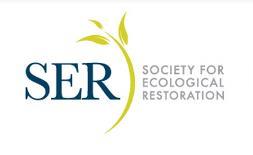
World
Conference at the Madison Wisconsin Convention Center where we attended two days of presentations talking about the latest science behind Ecological Restoration!
Cleaning and Removing Catch Basin Protectors
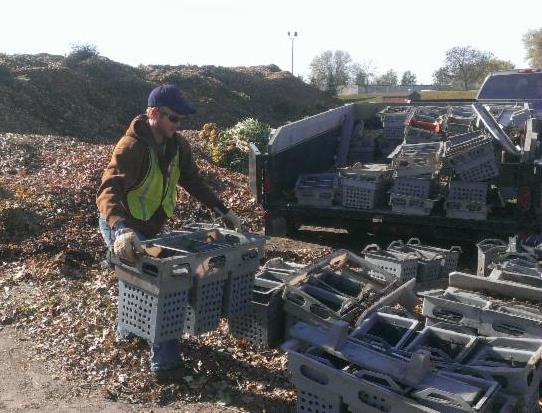
around
Schmidt Lake in Plymouth. Trays with baskets were
placed in the stormwater sewers around the lake to help filter out leaves and sediment and were taken out this week before it freezes.
|
|